Search Results

Michele
The news came that I had been dreading after three days of being hospitalized. Finally, they would tell me my diagnosis. Why my blood counts were critically low. Why the pain in my right leg was excruciating. Why morphine didn’t touch that pain. Since arriving at the hospital, my inner dialogue was on repeat, “What’s wrong with me? Somebody please just tell me everything is going to be fine."

Matthew "Scott"
On January 11th, 2019 at 9:35 p.m., exactly 11 days before my baby brother's 40th birthday cancer decided to come to the party uninvited. It would be the first time in my life that I would see my mother, the strongest person I know, collapse in utter disbelief. He had a cough he couldn't shake, his doctor sent him for some blood work at lunchtime, by dinnertime his platelets were 7,000 and his Dr. said he should go to the hospital for some tests, and by bedtime we were transporting him to The James Cancer Hospital and Solove Research Institute.
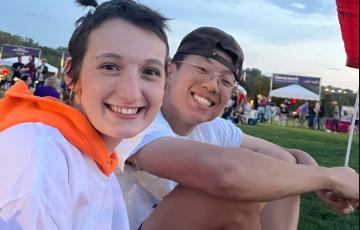
Katie
Only a couple weeks into my first year of my graduate program, I was diagnosed with acute myeloid leukemia (AML) with FLT3 mutation. I was only 21 years old and my entire world got flipped upside down. My whole life changed and I was about 1,000 miles from home.
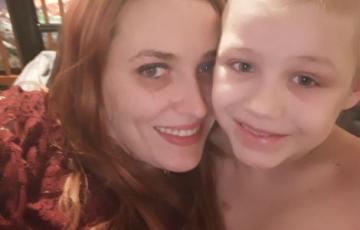
Jayden
On May 15, 2018, we found out that our baby boy has B-cell leukemia. At first, it was rough but he has now been cleared of any cancer in his body! He still has to undergo chemotherapy for the next two years, but Jayden is a very strong seven year old and he will fight this horrible disease!
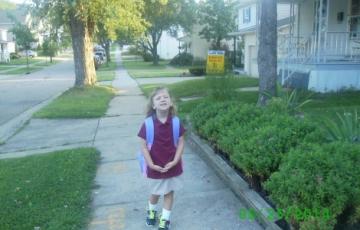
Payton
My daughter Payton is a two-time cancer survivor. She had acute myeloid leukemia (AML). She had a cord blood transplant on March 8, 2012. She has a dog and a cat, and she loves camping, spending time with her family and playing outside with her friends. She thinks cancer is nasty and she hated it. She is a fighter.
Kacy
I am on this adventure to help others and challenge myself! I do not have a personal story or relationship with The Leukemia & Lymphoma Society (LLS), but I am honored to be nominated as a Visionary and know my involvement will help change lives. I also want to share this experience with my daughter and teach her the power of action. I am excited to see where this goes, and the sky is the limit!

Aila
Aila was diagnosed with acute myeloid leukemia (AML) on October 5, 2023. She was nearly 16 months old and was just getting used to being a walking toddler and enjoying the exploration of her world. Aila had been feeling sick for a few weeks before she was diagnosed. She had fevers, irritability, fatigue, sleeping long hours, and a decreased appetite. In the last several days before she was diagnosed, she started getting unexplained bruising and petechiae (broken blood vessels) all over her body.

Hunter
I would like to introduce everyone to my little warrior, Hunter. When he was just four years old, he had an enlarged stomach that just kept getting bigger and bigger with no answers as to why. Well, finally in October, his doctor sent him for more testing to hopefully finally get a diagnosis that could be treated. We were thinking appendicitis, which would be an easier cure than leukemia. On October 26, 2021, when we were referred to the Children's Hospital of Wisconsin, our worst fear became a reality.
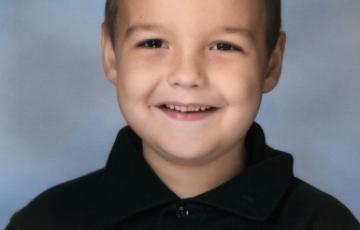
Amos
Amos is 6 years old and has been in treatment for leukemia since September 2017.
Three weeks after his very first day of kindergarten, he was diagnosed with Acute Lymphoblastic Leukemia (ALL). Amos spent a month in the hospital for the initial induction phase of his treatment, and then was homebound for 9 more months while he continued his intensive chemotherapy regimen. His immune system was so compromised that he could not attend school or be in public spaces. He received tutoring from a teacher twice a week at home.

Rebecca
Less than one month before finishing her clinical fellowship year as a speech-language pathologist, Becca was diagnosed with Hodgkin’s lymphoma. Her life, as well as that of her family, friends, and dog (Clifford), were turned upside down.
Helena
In 2018, a few days before Thanksgiving, Helena noticed something. She was having difficulty lifting speakers at her gigs. She became winded after only a few songs. Even the most minute tasks became daunting.

Jaiden
My son, Jaiden was diagnosed with T-cell acute lymphoblastic leukemia (ALL) on November 21, 2018. Prior to his diagnosis, Jaiden was a very well-rounded athlete and he played almost every sport, until one day during a football he fractured his arm and was done for the season. Needless to say, he was in a cast for 6 weeks.

Tracy
In 2001 at the age of 31, I was living in Maui working at the Ritz Carlton and began to feel sick. I had a rash on my hand, was tired, losing weight, and just did not feel well. I had been healthy all my life so thought it would pass.

Liz
I've been affiliated with The Leukemia & Lymphoma Society (LLS) for many years through the volunteer/fundraising opportunities available to my kids. Little did I know I'd be visiting your website for my own needs once my mom was diagnosed with acute myeloid leukemia (AML) in January 2023. I'm overwhelmed with the advances made by LLS and find your organization to be a tremendous resource filled with hope. I always click on your stories and decide I want to share mine because I feel like my story and that of my mom's offers just that, HOPE!
Terry
My life has been an interesting journey. In April 2019, I lost my wife of 20 years, and in August 2020, I lost my older brother to leukemia. My wife was 50, and my brother was 64. After several months of excruciating pain in my abdomen, I was finally diagnosed with non-Hodgkin B-cell lymphoma (B-NHL) in May 2021. I was 58. Upon entering the hospital in June for my first round of chemo, I was diagnosed with acute renal failure. After several days of treatment, I finally started my chemotherapy. I was lucky, or so I thought, no radiation for me.
Disease- and Treatment-Related Pain
People with cancer can have pain caused by the cancer itself, its treatment, or both. They may also have pain caused by other health problems that are unrelated to cancer (like arthritis or diabetes).
Increased pain does not mean that the cancer is getting worse, but you should always tell your healthcare team if you have increased pain.
It’s important to remember that no matter what the cause, pain can be treated.

Dr. Brown
Jennifer Brown, M.D., Ph.D., who played a role in advancing ibrutinib for patients with chronic lymphocytic leukemia (CLL), is the recipient of an LLS Translational Research Program grant, and has previously received a career development program grant.
Her work is currently focused on studying the role that the Notch pathway plays in the development of CLL and whether therapies that target Notch can be effective for these patients.

D.J.
I was diagnosed with acute promyelocytic leukemia (APML) on February 5, 2025. My story is still being written, but so far it has been scary and quite the roller coaster ride, including a 38-day hospital stay with 28 days of chemo. I am not sure where this is going to take me, but I am grateful for the people who are going to help me along the way.
Lab and Imaging Tests
Doctors use several different lab and imaging tests to help detect (diagnose) a blood cancer (leukemia, lymphoma, myeloma, myelodysplastic syndromes or myeloproliferative disease). You may need to undergo additional tests to confirm your diagnosis.
Once your diagnosis is confirmed, your doctor may need to test you for certain genetic, cellular or molecular characteristics that will help him or her treat your specific diagnosis.
Your doctor considers these test results along with information from your physical examination and detailed medical history to:

Teresa
It took two months for the doctors to take my illness seriously. I was suffering from hip and leg pain, but the doctors thought it was caused by the sports I was playing in high school. They would send me home with pain medication.
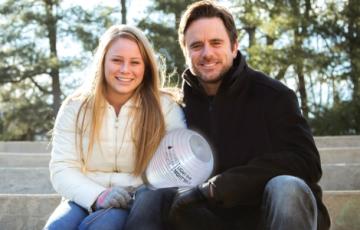
Addie
Charles Esten, an actor/musician who plays Deacon Claybourne on the TV show “Nashville,” is this year’s Light The Night Walk National Honorary Chair. Esten’s 15-year-old daughter, Addie, was diagnosed with leukemia at age 2 1/2 and, thanks to advances in treatment, is thriving today. Because of their personal connection to blood cancer, Charles, his wife Patty, and the entire Esten clan are strong supporters of LLS.
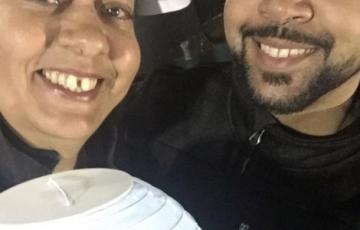
Acosta
In 1992 my son was diagnosed with leukemia at the age of 3 and after 3 yrs of chemotherapy he’s finally cured.
In 2009 I was diagnosed with non-Hodgkin lymphoma stage 4. I underwent 3 years of chemotherapy and today I’m in remission!
As mother and son survivors, we have been walking and part taking in as many events as we can, he’s my inspiration! We will walk again this year together once again!